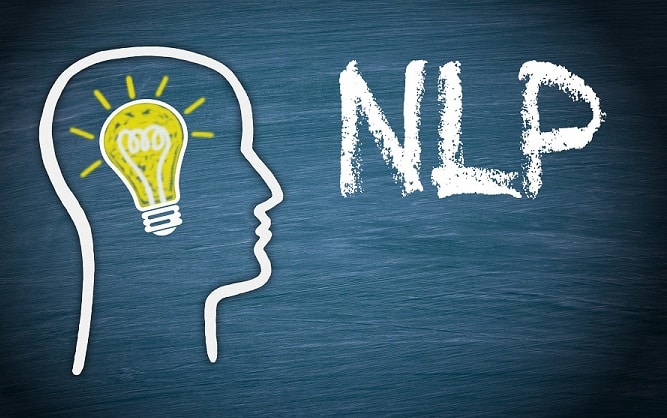“The science of achievement”
~ Tony Robbins ~
Neuro-linguistic programming is a method of changing a person’s thoughts, feelings, and behaviors, for achieving desired results for them.
The rise in popularity of NLP or neuro-linguistic programming has become common since its inception in the 1970s, in California.
The system’s usage includes treatment of stress, anxiety, and phobias disorders; along with coaching and training techniques for enhancing performance and growth in one’s personal and professional life.
So what is NLP?

“There is no such thing as reality, only our perception “
~ Becky Mallery ~
NLP can be used for personal development, phobias, and anxiety.
NLP uses imaginative, perceptual, sensational, behavioral, and communication techniques for enabling people to change their thoughts, feelings, and actions efficiently.
Not to be mistaken with the natural language processing computer science field that uses the same acronym, NLP focuses on changing people’s perception of life through visual, physical, and language patterns.
NLP was invented and introduced to the world by Richard Bandler and John Grinder, that believed it is possible to identify and capture the patterns of thoughts and behaviors of successful people in all areas of life, and to teach them to other individuals.
How does NLP actually work?

“We are what we repeatedly do.
~ Will Durant ~
Excellence, then, is not an act,
but a habit.”
It is based on the idea that mankind operates by internal “maps” of the world that they learn through sensory experiences – auditory, visual, kinesthetic (touch), gustatory(taste), and olfactory(smell) experiences.
NLP techniques are designed to detect and adjust unconscious biases, beliefs, and limitations of an individual’s internal map of the world.
NLP is operating through the conscious use of language patterns to generate changes in a person’s thoughts and behavior.
One of NLP’s key features is the concept that most people are relying on one main sensory system, known as the preferred representational system or PRS.
NLP practitioners and therapists can observe the sensory preference through language patterns. Sentences such as “I see your point” may signal a visual PRS. Or “I hear your point” may signal an auditory PRS.
An NLP practitioner will identify a person’s PRS and base their therapeutic framework around it. The framework could involve rapport-building, information-gathering, and goal-setting with them.
The basis of the therapeutic scope and framework is a person’s PRS. A classic NLP approach is to initiate the framework with rapport building – “opening” and being on the same physical-emotional page with the patient/trainee.
NLP Techniques

~ Channing Pollock ~
“The only good luck many
great men ever had was
being born with the ability
and determination
to overcome bad luck.”
NLP is a huge domain of practice. As such, NLP practitioners and therapists use various different techniques, including:
One of the most common practices of NLP is removing negative thoughts and feelings connected and linked to a past event.
Anchoring: Turning sensory experiences into triggers for certain emotional states.
Rapport: The practitioner harmonically tunes into the patient/trainee by mirroring their physical behaviors for building mutual communication and response through tonality, movement, and gestures.
Swish pattern: Shifting existing undesired patterns of behaviors, emotions, and thoughts into a desired predefined goal, or general well-being.
Sensory dissociation: Dissociating unpleasant past experiences’ auditory, visual, kinesthetic (touch), gustatory, and olfactory features for eliminating their negative influence.
Examples
“The brain can be developed
~ Thomas Edison ~
just the same as the
muscles can be developed,
if one will only take the
pains to train the mind to think.”
NLP is used as a method of personal development and goal setting, by harnessing the power of imagination for “teaching” the brain that a given goal can certainly be achieved.
Instructing the brain how things “should be”, and the brain obeys and gets the job done.
NLP tools and techniques have been used in therapy for psychological and psychiatric disorders, including phobias, depression, anxiety, post-traumatic stress disorder; along with “easier” cases of common stress relief treatments.
**P.S Why do we even have all this negativity?
The various NLP techniques are meant for making a person’s inner strengths and resources accessible, and even making other people’s mental resources accessible as well.
Does NLP work?

“All that we are is the result of what we have thought. “
~ Buddha ~
Though traditional medicine has yet to fully embrace it, NLP without a doubt has changed the lives of millions worldwide.
Have someone ever tried NLP and it didn’t work? Of course.
But the numerous testimonials of people who completely changed their lives because of NLP show that it can definitely be valuable.














